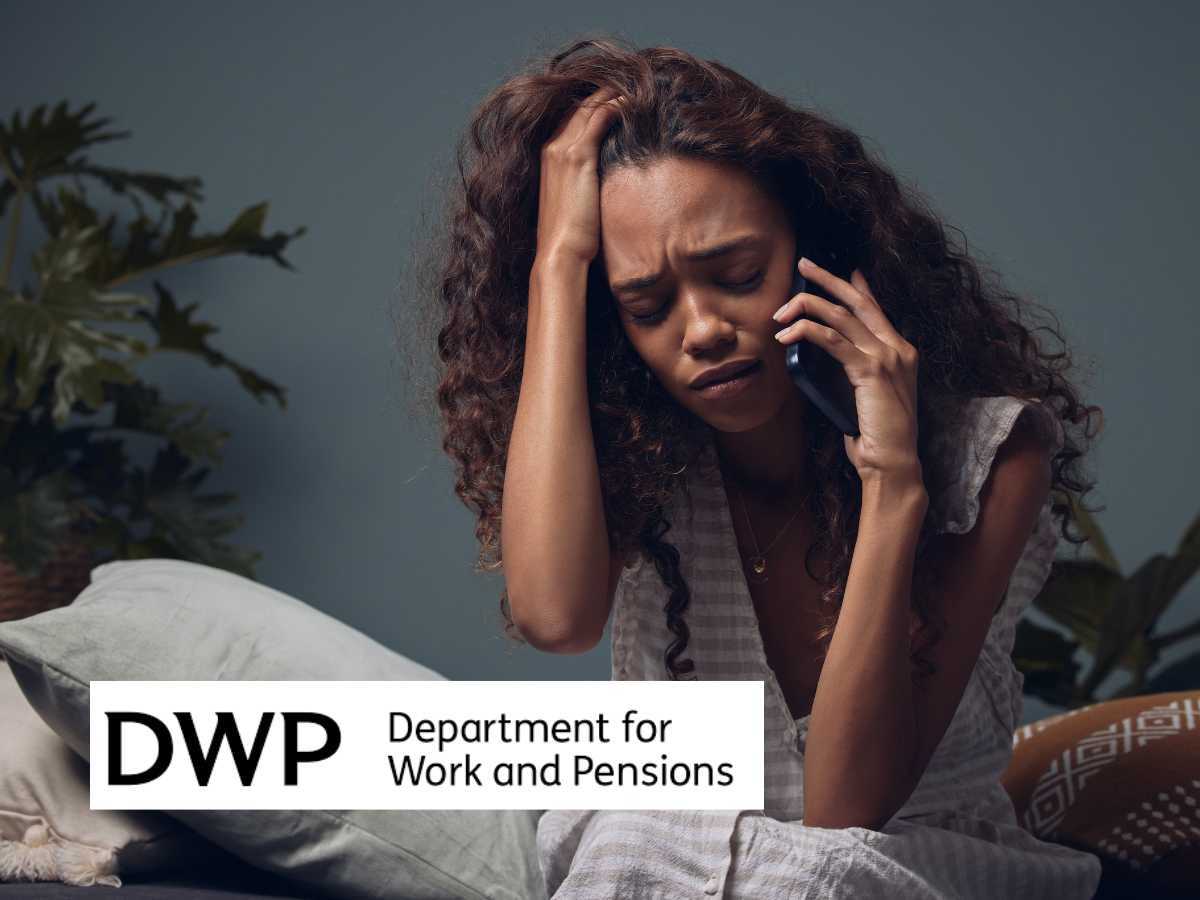In just one year, the Department for Work and Pensions (DWP) made members of the public wait a collective 753 years for the department to answer calls to its key service – including for PIP. Across over 40 million calls in 2023, the DWP forced benefit claimants and prospective applicants to wait an average of over 15 minutes, but for many the wait was much longer.
This was the headline take-away picked up by the corporate press from a new report by the UK’s public spending watchdog. However, the report exposed more about the abysmal state of the DWP than outlets cared to report.
Crucially, its treatment of chronically ill and disabled people was once again shown to be appallingly dire.
DWP: 753 years on the line
On 23 July, the National Audit Office (NAO) published a report reviewing the “quality of” the DWP’s customer service.
Largely, the report found that the DWP had “fallen short” in a number of critical areas, concluding that:
It is generally not meeting its performance benchmarks or standards for customer satisfaction, payment timeliness and answering calls to its in-house telephone lines.
And notably, there was one especially stand-out figure. As Sky News reported:
People phoning the Department for Work and Pensions (DWP) collectively spent more than 753 years waiting for calls to be answered in 2023/24, a report has found.
The wait time applied to more than 40 million calls made – although more than six million of these were abandoned.
Essentially then, the DWP wracked up an astounding collective wait time for people accessing its key service. A singular clarification in the report showed that the reality was actually worse still. It said that:
It does not include any time customers spent waiting before they were assigned to a queue.
In other words, the real total wait time could actually be much longer than this. Of course, this has real-world impacts on claimants. Significantly, the burden of the DWP’s failures on chronically ill and disabled people was plain to see.
While the report’s analysis of this was limited, it came across to some extent through the DWP’s service satisfaction evaluation. Naturally, this was a survey the DWP conducted to measure customer satisfaction with its services. Overall, for its most recent survey in 2023, 83% of customers said they were satisfied with the service they received.
This sounds high, but it means that nearly a fifth of people dealing with the DWP weren’t content with the service. What’s more, the number dropped when applied to people claiming disability benefits. Personal Independence Payment (PIP) claimants said they were satisfied with the DWP’s customer service just 77% of the time. Effectively then, almost a quarter of PIP claimants it surveyed weren’t happy with the service.
And the disproportionate impact of the DWP’s failures on chronically ill and disabled claimants was a reoccurring theme across other statistics the report reviewed.
Barely half of DWP PIP claims processed on time
Perhaps most notably, the NAO report revealed how in 2023, the DWP had processed just barely over half of PIP claims on time. Comparatively, the department had managed to complete State Pension claims on time in 96% of cases.
The DWP has varying expected timeframes for processing different benefits. For the State Pension, this is ten working days. By contrast, the DWP aims to process PIP claims within 75 working days.
Essentially then, the DWP had 7.5 times the time in which to process these than the State Pension, but was managing to do this for only just over half the cases.
The DWP justifies these lengthier timeframes as a result of the increased “complexity” of PIP, compared to the State Pension. Specifically, the report stated how the DWP had set the 75 working day target to account for:
the time taken to gather the detailed evidence needed to assess a claim.
However, this mainly serves to reinforce how onerous the process is for chronically ill and disabled claimants. And previous research has indeed demonstrated this as well. For example, a 2022 parliamentary question revealed how PIP claimants overwhelmingly win their appeals based on the very same evidence they provided during their initial assessment. As Benefits and Work reported:
So, in 91% of cases the claimant won without any new evidence being provided.
And in just a tiny 1% of cases was it new written evidence, for example a medical report, that swung the outcome.
Of course, this suggests that the DWP is wrongly rejecting many applicants through its cumbersome process.
Underpaying claimants on disability benefits
What’s more, the report’s findings also backed up the fact it’s wholly inadequate for chronically ill and disabled claimants. Specifically, it identified how:
Levels of unfulfilled eligibility were highest for disability benefits
Effectively, ‘unfulfilled eligibility’ is the DWP jargon for the department paying claimants less than they were entitled to. For DWP PIP, this stood at 4%, accounting for £870m. The DWP underpaid Disability Living Allowance (DLA) claimants most, at 11.1%, or £750m less than they should have received.
Largely, it attributed this to:
customers failing to inform DWP that their condition has worsened or their needs have increased
There are some obvious issues with this framing too. For one, it’s the DWP doing what the DWP does best: pushing the blame onto claimants for its own failures. Essentially, it’s writing off vastly underpaying thousands of claimants as their own doing, without looking at why it is people aren’t contacting them in the first place. This could be for many reasons, but the obvious one is that people whose health condition has worsened, might literally not be able to. This is obviously a problem for fluctuating conditions like myalgic encephalomyelitis (ME) and long Covid for instance.
So, even if we are to accept it’s claimants’ fault for not informing the DWP, it once again primarily goes to show how inadequate and flawed the DWP PIP process is. In short, the system is the problem, not the people claiming it. Moreover, it neatly underscored the issue that the DWP always places the onus on claimants to prove their condition and constantly update them if it changes. This is instead of simply accepting people’s circumstances and providing appropriate support from the get-go.
Leaving DWP PIP claimants without answers
At the same time, the report also noted that the DWP in-house and outsourced telephone services had answered 85% of calls in 2023-2024. That sounds like an impressive percentage. Only, this wasn’t actually the full picture either.
Firstly, that 15% equates to 6.5 million calls unanswered [43.2m-36.7m]. That in itself is no small number – because behind them are real people trying to get support for their DWP PIP claims. For instance, this could include a number of the people the DWP say failed to update it of their worsened health condition.
The DWP statistics split out calls taken by its in-house service from its outsourced system. Outsourced calls performed better in 2023-2024, fielding 94% of calls. In the same period, the in-house lines hit only 76% – meaning it failed to answer nearly a quarter of calls to its service.
In reality though, its performance was a lot worse than those figures showed, because the DWP was massaging its numbers. This is because the DWP doesn’t include ‘blocked calls’ or ‘deflected calls’ in these figures. Blocked calls are those the automated system rejects when phone line queues are ‘full’. Meanwhile, the report explained that deflected calls are typically those its phone service drops because callers are contacting towards the end of the day.
The DWP’s in-house service illustrated the issue best. For blocked calls, this amounted to 10%, and deflected were 4%, together comprising 3.6 million calls. So when the DWP included these in its statistics, the rate of answered calls fell significantly to 66%. In other words, its in-house line was failing to answer a third of calls to the service.
In short: the DWP’s main service is massively inaccessible for claimants.
DWP: a toxic culture divorced from the real-world
Overall, this was a predominantly clinical assessment of the DWP’s service performance. In particular, its focus centred round the DWP customer services’ “value for money”.
In that sense, the report wasn’t packing any real punches. The similarly subdued Civil Service World highlighted how the assessment put many of the DWP’s failings down to:
workforce retention difficulties and inefficient IT
And while ill-equipped, inexperienced staff and outdated IT might play a part, this ignored a key factor. Specifically, the toxic culture at the heart of the DWP. For one, as the Canary’s Steve Topple recently reported, the majority of DWP staff have admitted that they do not carry out proper safeguarding procedures. But more than this, as Topple noted, this is little wonder within a department that is:
systemically prejudiced, discriminative, and negligent towards claimants. It has wilfully covered up it and its staffs’ involvement in the deaths of claimants for years.
Not to mention that the UN has repeatedly lambasted the department for its “grave” and “systematic” rights violations. Throw in the fact that the Equality and Human Rights Commission (EHRC) has launched an inquiry into the inhumane treatment of chronically ill and disabled people and you get a fairly good idea of the department’s nature.
Ultimately, as removed from the real-world reality of all this for claimants as it was, the NAO report still proved something vital. That is, that the DWP is utterly unfit for purpose. PIP and other claimants and campaigners already know this. Now however, we have more solid evidence and context to the DWP’s disgraceful litany of failures.
Featured image via the Canary




